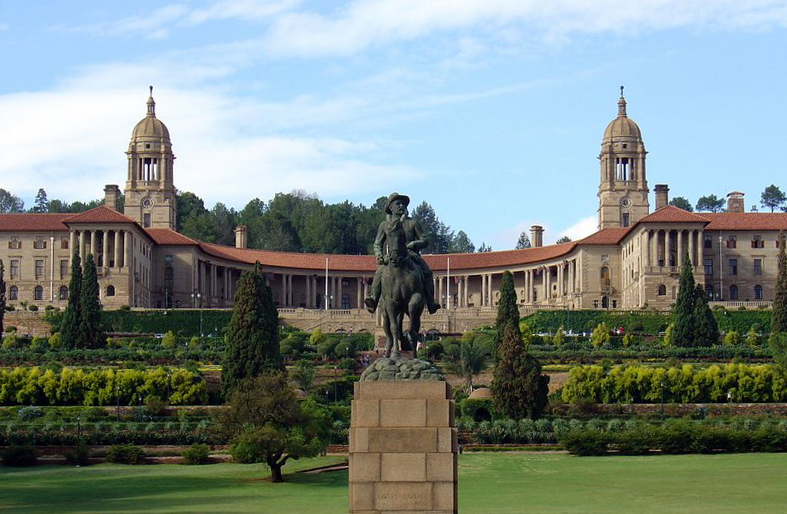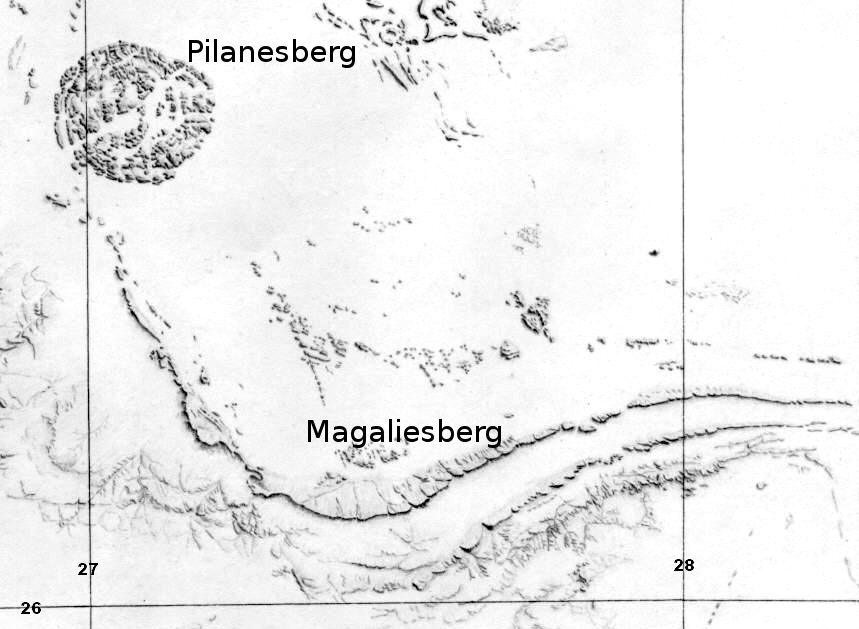|
House Of Khumalo
The House of Khumalo is the reigning Royal Family of the former Mthwakazi Kingdom (modern day Matabeleland). The Mthwakazi Kingdom was founded in 1823 by Mzilikazi kaMatshobana. While the Mthwakazi Kingdom ended in 1894 with the First Matabele War, The house has endured to the present day. Origin It is believed that the Khumalo originated with Khumalo kaMntungwa who settled around the Mkhuze river in Northern KwaZulu-Natal in South Africa. There they lived, predominantly under the yoke of the larger Ndwandwe for several generations. Khumalo kaMntungwa was succeeded by his son Mkhatshwa kaKhumalo, Mkhatshwa kaKhumalo was succeeded by his son Mangethe kaMkhatshwa ( Mangethe was also called "Zikode"). The three eldest sons of Mangethe kaMkhatshwa produced the three primary branches of the Khumalo House. They are: * Mashobane kaMangethe (also called "Matshobane kaZikode"). ''It is from this branch that the Royal line of Khumalo descends. * Magawozi "Dloko" kaMangethe (als ... [...More Info...] [...Related Items...] OR: [Wikipedia] [Google] [Baidu] |
Mthwakazi
Mthwakazi is the traditional name of the proto-Ndebele people and Ndebele kingdom and is in the area of today's Zimbabwe. Mthwakazi is widely used to refer to inhabitants of Matebeleland Province in Zimbabwe. Etymology The word ''Matabele'' is an anglicised term that was used by the British, a spelling that is still common in older texts, because they found it difficult to pronounce the word ''amaNdebele''. Moreover, in the early 19th century, the Ndebele lived in territories populated by Sotho-Tswana peoples who used the plural prefix "ma" for certain types of unfamiliar people or the Nguni prefix "ama", so the British explorers, who were first informed of the existence of the kingdom by Sotho-Tswana communities they encountered on the trip north, were presented two variations of the name, the first being the Sotho-Tswana pronunciation (''maTebele'' or ''Matabele'') and the second being the Ndebele pronunciation (''Ndebele or amaNdebele''). They are now commonly known as the ... [...More Info...] [...Related Items...] OR: [Wikipedia] [Google] [Baidu] |
Mthethwa Paramountcy
The Mthethwa Paramountcy, sometimes referred to as the ''Mtetwa'' or Mthethwa Empire, was a Southern African state that arose in the 18th century south of Delagoa Bay and inland in eastern southern Africa. "Mthethwa" means "the one who rules". Background According to Muzi Mthethwa (1995), the Mthethwas are descended from the Nguni tribes of northern Natal and the Lubombo Mountains, whose modern identity dates back some 700 years. They are among the first Nguni-Tsonga groups who left the Great Lakes in Central Africa between 200 AD and 1200 AD. On arrival in Southern Africa, they settled around modern-day Swaziland, mainly on the Lubombo Mountains, before leaving in the 17th century to settle in modern-day KwaZulu-Natal, in the Nkandla region. It consisted of roughly 30 Nguni chiefdoms, lineages, and clans. Unlike its successor, the Zulu Kingdom, the Mthethwa Paramountcy was a confederation. After Zulu chief Shaka kaSenzagakhona (better known as Shaka Zulu) became king, he fo ... [...More Info...] [...Related Items...] OR: [Wikipedia] [Google] [Baidu] |
Union Buildings
The Union Buildings ( af, Uniegebou) form the official seat of the South African Government and also house the offices of the President of South Africa. The imposing buildings are located in Pretoria, atop Meintjieskop at the northern end of Arcadia, close to historic Church Square and the Voortrekker Monument. The large gardens of the Buildings are nestled between Government Avenue, Vermeulen Street East, Church Street, the R104 and Blackwood Street. Fairview Avenue is a closed road through which only officials can enter the Union Buildings. Though not in the centre of Pretoria, the Union Buildings occupy the highest point of Pretoria, and constitute a South African national heritage site. The Buildings are one of the centres of political life in South Africa; "The Buildings" and "Arcadia" have become metonyms for the South African government. It has become an iconic landmark of Pretoria and South Africa in general, and is one of the most popular tourist attractions in th ... [...More Info...] [...Related Items...] OR: [Wikipedia] [Google] [Baidu] |
Meintjieskop
Meintjeskop is a hill in Pretoria on which the Union Buildings (die Uniegebou(e) in Afrikaans) were constructed. Marthinus Wessel Pretorius, later to become first president of the Transvaal Republic, was the original owner of the farm 'Elandsfontein' on which Meintjieskop stands. In 1856 Andries Francois du Toit (1813–1883), in exchange for a Basuto pony, acquired part of the farm, which he named Arcadia.Standard Encyclopaedia of Southern Africa vol.7 He was also Pretoria’s first magistrate The term magistrate is used in a variety of systems of governments and laws to refer to a civilian officer who administers the law. In ancient Rome, a '' magistratus'' was one of the highest ranking government officers, and possessed both judici ... and was responsible for planning the layout of the city. During this period he sold his land for £1200 to Stephanus Jacobus Meintjes (1819–1887), and by 1870 it bore the name Mentjieskop. Meintjeskop is part of the Witwatersberg Ridge, ... [...More Info...] [...Related Items...] OR: [Wikipedia] [Google] [Baidu] |
Apies River
__NOTOC__ The Apies River is a river that flows through the city of Pretoria, South Africa. Its source is located just south of the city (south of Erasmus Park) and it flows northward until it drains into the Pienaars River. The word "Apies" is Afrikaans for small monkeys and is a reference to the historical abundance of vervet monkeys on the Apies River banks. Nguni-speaking people, who became known as the Ndebele, are thought to have been the first people to recognise the suitability of the Apies River valley as a place to put down roots. The Ndebele encountered indigenous nomadic Khoisan people, which they called abaTshwa (the People who are Ignored), occupying the area. The Ndebele named the river 'Tshwane' which means 'Place of the abaTshwa'. It is also argued that they named the river after one of their chiefs "Tshwane" who is reputedly buried under the Wonderboom (tree), Wonderboom. It is also proposed that 'Tshwane' is a corruption of 'tshwene' which is the Sepedi, Sotho ... [...More Info...] [...Related Items...] OR: [Wikipedia] [Google] [Baidu] |
Wonderboom (tree)
The Wonderboom (Afrikaans: 'wonder tree') is a dense grove of parent and daughter trees of the species ''Ficus salicifolia'', that descended from a central bole of about a thousand years old. It is situated in the Wonderboom Nature Reserve, Pretoria, and two circular walkways currently protect it from pedestrian traffic around its trunk and roots. As it has grown, its outlying branches have rooted themselves around the parent tree. This has repeated until there are now three layers of daughter trees encircling the mother fig, with 13 distinct trunks, covering an area with a diameter of over 50 metres. History The tree was discovered by the Voortrekkers in 1836 under the leadership of Hendrik Potgieter who named it the Wonderboom. Many Trekkers rested under its shade on their journey to the Soutpansberg. In 1870 a fire destroyed a large part of the tree reducing its size drastically. The Wonderboom Nature Reserve was declared a national monument on 23 September 1988. It was ... [...More Info...] [...Related Items...] OR: [Wikipedia] [Google] [Baidu] |
Magaliesberg
The Magaliesberg (historically also known as ''Macalisberg'' or ''Cashan Mountains'') of northern South Africa, is a modest but well-defined mountain range composed mainly of quartzites. It rises at a point south of the Pilanesberg (and the Pilanesberg National Park) to form a curved prominence that intersects suburban Pretoria before it peters out some to the east, just south of Bronkhorstspruit. The highest point of the Magaliesberg is reached at Nooitgedacht Glacial Pavements, Nooitgedacht, about above sea level. A Hartbeespoort Aerial Cableway, cableway reaching to the top of the mountain range is located at Hartbeespoort Dam, providing sweeping views of the Magaliesberg and surrounding area. Geology The Magaliesberg has ancient origins. Its composition is ascribed to successive Geology, geological processes over a very protracted history. Its quartzites, shales, chert and Dolomite (rock), dolomite were deposited as sediments in an inland basin on top of a 3 billion year o ... [...More Info...] [...Related Items...] OR: [Wikipedia] [Google] [Baidu] |
Donda KaGasa
''Donda'' is the tenth studio album by American rapper Kanye West, released through GOOD Music on August 29, 2021, with distribution handled by Def Jam Recordings, his last release with the label. West recorded much of the material at multiple locations in the summer of 2021, including Bighorn Mountain Ranch in Wyoming and Mercedes-Benz Stadium in Atlanta. It features guest vocals from the Sunday Service Choir, Jay-Z, The Weeknd, Playboi Carti, Lil Baby, Travis Scott, Lil Durk, Kid Cudi, DaBaby, Pop Smoke, and Marilyn Manson, among various others; vocals from Chris Brown were also included prior to the album being updated. West, BoogzDaBeast, Dem Jointz, Mike Dean, and Ojivolta primarily helmed its production. The initial version of ''Donda'' was initially set for release in July 2020, under the title of ''God's Country'', but experienced multiple delays and continuous alterations to tracks and the tracklist prior to its final release. The album's style has been descri ... [...More Info...] [...Related Items...] OR: [Wikipedia] [Google] [Baidu] |




